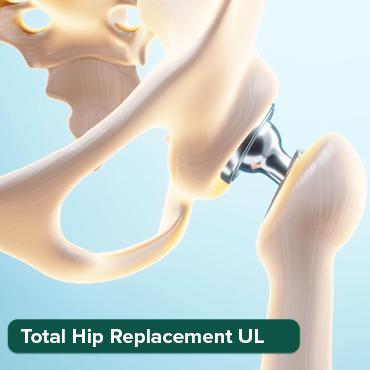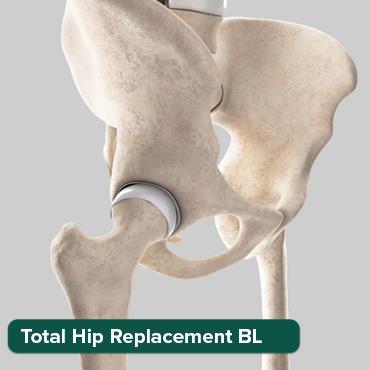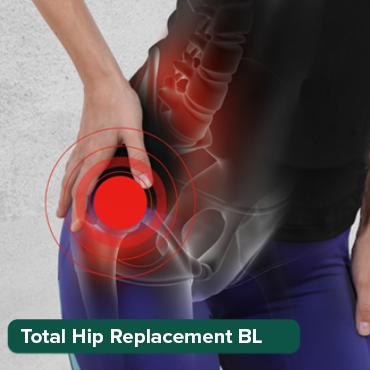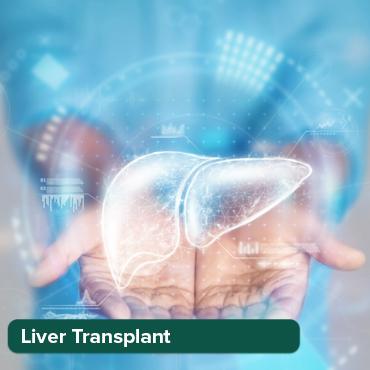
Meniscus Repair Surgery :Reviving Knee Function
28 Sep, 2023
 Healthtrip Team
Healthtrip TeamIn the world of orthopedic surgery, the path to healing and regaining knee function begins with understanding meniscus repair surgery. This blog, is your comprehensive resource for every aspect of this surgical journey. From defining meniscus repair surgery and exploring the latest advancements to delving into preoperative preparation, recovery strategies, and long-term well-being, we will address your concerns, offer solutions, and empower you with the knowledge to embark on a successful road to recovery after a meniscus injury
The meniscus, pronounced as "meh-NIS-kus," is a C-shaped cartilage in your knee joint. It acts as a cushion and shock absorber between the thigh bone (femur) and shin bone (tibia), helping to distribute weight and provide stability.
Most popular procedures in India
What is Meniscus Repair Surgery?

Wellness Treatments
Give yourself the time to relax
Lowest Prices Guaranteed!

Lowest Prices Guaranteed!
Meniscus repair surgery is a medical procedure aimed at fixing tears or damage to the meniscus in the knee joint. Surgeons use various techniques to mend or remove damaged parts of the meniscus, depending on the extent and location of the injury.
The primary purpose of meniscus repair surgery is to alleviate pain, restore knee function, and prevent long-term joint damage. This procedure helps patients regain their mobility and return to their daily activities without discomfort.
Why Meniscus Repair Surgery is Done ?
A. Indications for Surgery
- Meniscus Tear Meniscus repair surgery is typically performed when there is a tear in the meniscus. Tears can occur due to traumatic injuries, degeneration, or wear and tear over time. These tears can vary in size, location, and severity, and the surgical approach may differ accordingly.
- Symptoms of a Torn Meniscus Common symptoms of a torn meniscus include pain, swelling, stiffness, and limited range of motion in the knee. Some individuals may also experience a popping sensation or difficulty bearing weight on the affected leg. These symptoms can significantly impact one's quality of life.
B. Who Needs Meniscus Repair Surgery
- Athletes and Sports-Related Injuries Meniscus tears are frequently seen in athletes due to the high demands placed on their knees during sports activities. Surgery is often recommended for athletes with significant meniscus tears to restore knee stability and function, allowing them to return to their sport safely.
- Age-Related Degeneration As we age, the meniscus can become more susceptible to degeneration and tears. Older individuals who experience persistent knee pain and functional limitations due to meniscus damage may benefit from repair surgery to improve their overall quality of life.
In summary, meniscus repair surgery is a procedure aimed at addressing meniscus tears to relieve pain and restore knee function.
Meniscus Repair Surgery Procedure
A. Preoperative Preparations
- Anesthesia Options (Local, Regional, General)
- Before the surgery, patients and their surgical team must decide on the type of anesthesia. Local anesthesia numbs a specific area, regional anesthesia blocks sensation in a larger region, and general anesthesia induces unconsciousness.
- The choice of anesthesia depends on the patient's health, the extent of the procedure, and the surgeon's preference.
- Surgical Site Sterilization
- Sterilizing the surgical site is crucial to prevent infection. The surgical team thoroughly cleans and sterilizes the knee area to minimize the risk of postoperative complications.
B. Surgical Techniques
- Arthroscopic Meniscus Repair
- Arthroscopic surgery is the most common approach for meniscus repair. It involves making small incisions around the knee joint and using a tiny camera (arthroscope) to visualize the interior.
- Specialized instruments are inserted through additional small incisions to repair the meniscus. This minimally invasive technique reduces scarring and promotes a faster recovery.
- Open Surgery (Less Common)
- Open surgery involves a larger incision and direct visualization of the knee joint. It is less common but may be necessary for complex or extensive meniscus injuries.
C. During the Procedure
- Incision and Visualization
- In arthroscopic surgery, small incisions are made to access the knee joint. The arthroscope provides a clear view of the meniscus and surrounding structures.
- Repair Techniques (Suturing, Staples, etc.)
- Various techniques can be used to repair the meniscus. Sutures, anchors, or staples may be employed to reattach torn or damaged portions of the meniscus. The choice of technique depends on the type and location of the tear.
D. Duration of Surgery
The duration of meniscus repair surgery can vary depending on the complexity of the tear and the chosen surgical technique. Typically, arthroscopic procedures are shorter, often lasting between 30 minutes to an hour, while open surgeries may take longer.
E. Postoperative Care
After surgery, patients are closely monitored and provided with pain management. Physical therapy and rehabilitation are essential components of postoperative care to help patients regain knee strength and flexibility. Recovery times can vary but may range from a few weeks to several months.
Latest Advancements in Meniscus Repair
A. Advances in Arthroscopic Technology
Modern arthroscopic equipment continues to improve, providing surgeons with better visualization and precision during surgery. High-definition cameras and specialized tools enhance the surgical experience.
B. Biologics and Tissue Engineering
Researchers are exploring the use of biologic agents and tissue engineering to promote natural healing of meniscus tissue. This includes the use of growth factors, stem cells, and scaffolds to encourage tissue regeneration.
C. Robotics in Meniscus Repair
Robotics-assisted surgery is becoming more prevalent in orthopedics. Robots can assist surgeons in performing precise and minimally invasive meniscus repairs, improving surgical outcomes.
D. Research on Regenerative Medicine
Ongoing research aims to harness the body's natural regenerative abilities to repair meniscus tissue. This includes studies on regenerative therapies and the development of innovative treatments.
Meniscus repair surgery involves careful preoperative preparations, surgical techniques, and postoperative care to address meniscus injuries.
Tips for Preparing Yourself for Surgery
A. Mental Preparation
- Manage anxiety: Practice relaxation techniques or consult with a therapist if needed.
- Follow exercise guidelines: If advised by your surgeon, engage in preoperative physical therapy.
- Maintain a healthy weight: Achieve or maintain an optimal weight to reduce surgical risks
- Balanced diet: Eat a well-rounded diet rich in nutrients to aid in healing.
- Hydration: Stay properly hydrated to promote recovery
- Medication review: Discuss your medications with your healthcare team and follow their recommendations.
- Caregiver arrangements: Ensure someone is available to assist you during the initial recovery phase.
- Postoperative care plan: Work with your healthcare team to outline post-surgery care and rehabilitation.
Risks and Complications
A. Surgical Risks
- Anesthesia reactions
- Bleeding during surgery
- Surgical site complications
B. Infection
- Surgical site infection
- Systemic infections
C. Blood Clots
- Deep vein thrombosis (DVT)
- Pulmonary embolism (PE)
D. Nerve or Blood Vessel Damage
- Numbness or tingling
- Impaired blood flow
Strategies to Prevent Complications
- Strict adherence to postoperative care instructions
- Early ambulation and mobility
- Blood thinners to prevent clot formation, as prescribed
- Prompt reporting of any concerning symptoms or signs of infection to healthcare providers
- Follow-up appointments with your surgeon to monitor progress and address any issues promptly.
Postoperative Recovery and Rehabilitation
1. Immediate Postoperative Period
- Hospital stay as needed
- Vital sign monitoring
- Wound care and infection prevention
- Pain assessment and management
2. Physical Therapy
- Early mobility exercises
- Range of motion exercises
- Strengthening exercises
- Functional training
- Gradual activity progression
3. Pain Management
- Medication per prescription
- Non-pharmacological pain relief methods (ice, elevation, relaxation)
- Open communication with the healthcare team about pain levels and concerns
4. Gradual Return to Normal Activities
- Follow surgeon's activity and weight-bearing instructions
- Transition from assistive devices (crutches, walker) as advised
- Gradual resumption of daily activities based on healing progress
- Avoid strenuous activities until clearance by the healthcare team
Outlook
- Assessing the success of the surgery and rehabilitation in the months and years ahead
- Implementing lifestyle changes to support joint health and overall well-being
- Maintaining a healthy weight
- Engaging in regular low-impact exercise
- Emphasizing the necessity of adhering to postoperative instructions
- Attending all follow-up appointments
- Communicating openly with the healthcare team about any concerns or setbacks.
How can we help with the treatment?
If you're on the lookout for treatment in India, let Healthtrip be your compass. We will serve as your guide throughout your medical treatment. We'll be by your side, in person, even before your medical journey commences. The following will be provided to you:
- Connect with renowned doctors from a network spanning 35+ countries and access the world's largest health travel platform.
- Collaboration with 335+ top hospitals , including Fortis and Medanta.
- Comprehensive treatments from Neuro to Cardiac to Transplants, Aesthetics, and Wellness.
- Post-treatment care and assistance.
- Teleconsultations at $1/minute with leading surgeons.
- Trusted by 44,000+ patients for appointments, travel, visa, and forex assistance.
- Access top treatments and packages, such as Angiograms and many more.
- Gain insights from genuine patient experiences and testimonials.
- Stay updated with our medical blog.
- 24/7 unwavering support, from hospital formalities to travel arrangements or emergencies.
- Pre-scheduled specialist appointments.
- Prompt emergency assistance, ensuring safety.
Meniscus repair surgery is a crucial step towards regaining joint function and overall well-being for individuals facing knee injuries. It involves assessing the long-term prognosis and potential challenges, scheduling postoperative follow-up care, making essential lifestyle modifications, and emphasizing patient compliance. Through these measures, individuals can maximize their chances of successful recovery and a return to an active, pain-free life after meniscus repair surgery.
Related Blogs

Getting Knee Replacement in India: A Guide for NRIs from Canada
Find out how NRIs in Canada can access affordable and

Germany's Orthopedic Prowess: Why Global Athletes Choose Healthtrip
Discover why Germany's cutting-edge orthopedic centers, featured on Healthtrip, are

Germany's Orthopedic Prowess: Why Global Athletes Choose Healthtrip
Discover why Germany's cutting-edge orthopedic centers, featured on Healthtrip, are

Fixation Surgery for Sports Injuries
Get back to your game with fixation surgery

The Power of Body Re-Alignment for Athletes
Learn how body realignment can improve athletic performance.

Football Injury Rehabilitation: A Holistic Approach
Take a holistic approach to football injury rehabilitation with our










